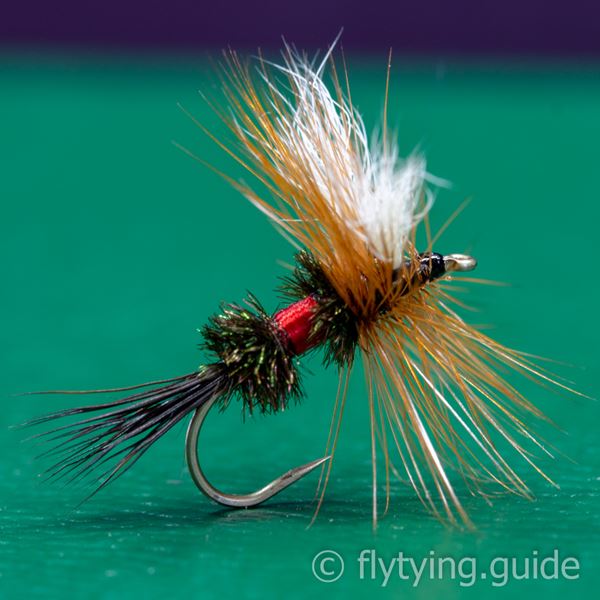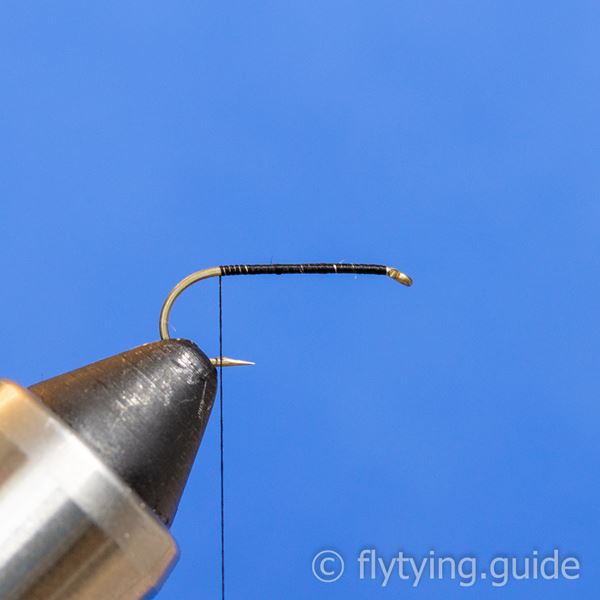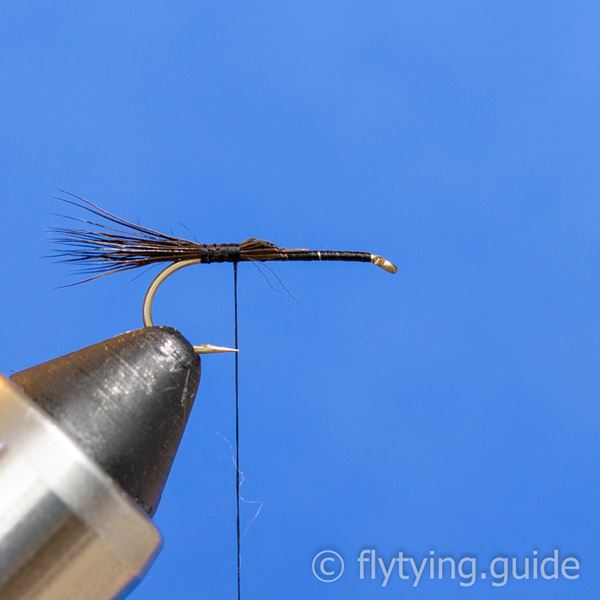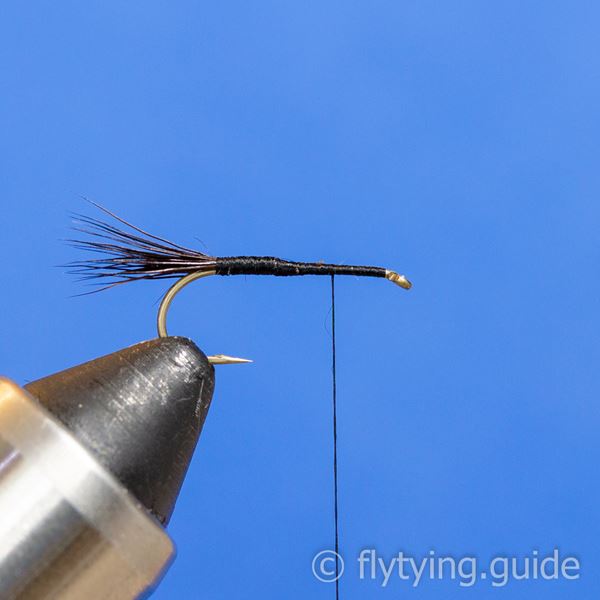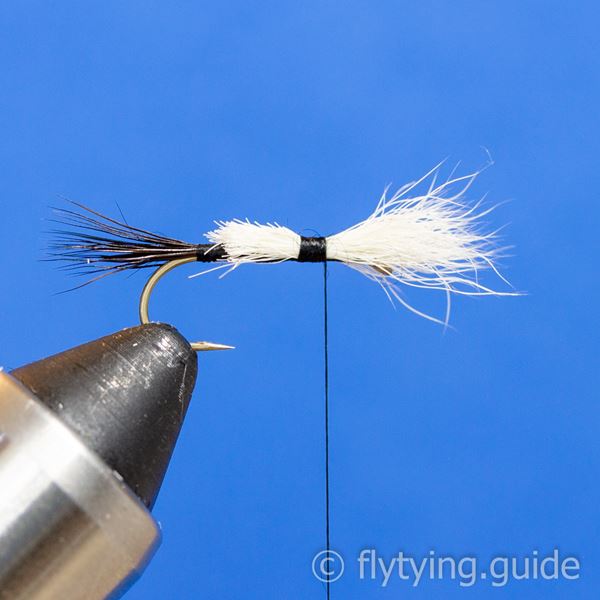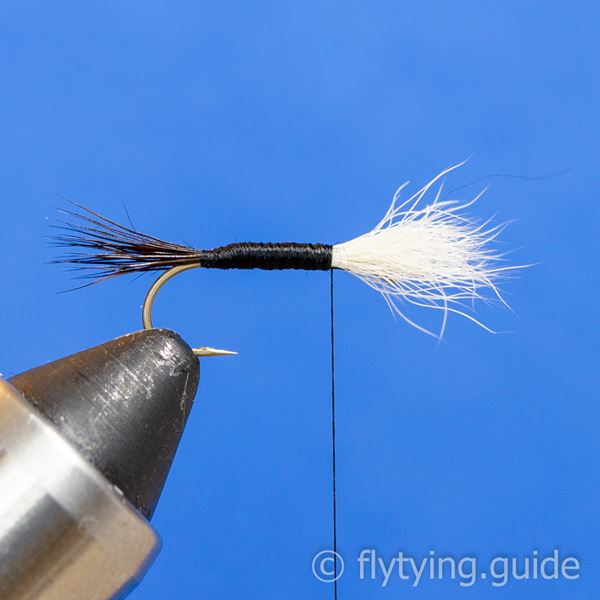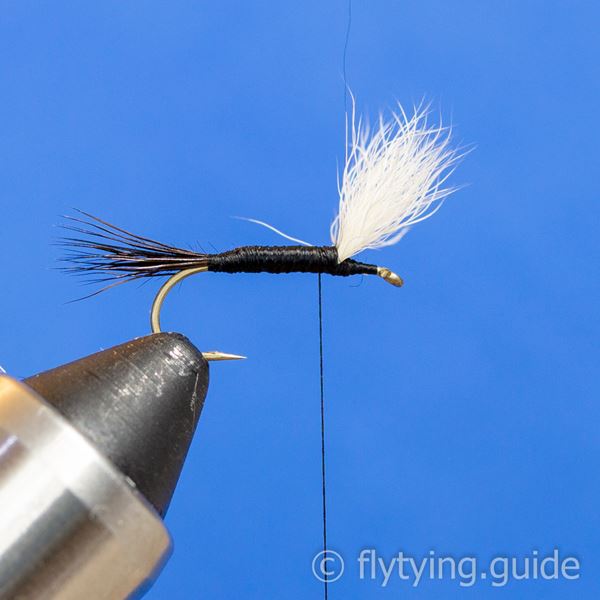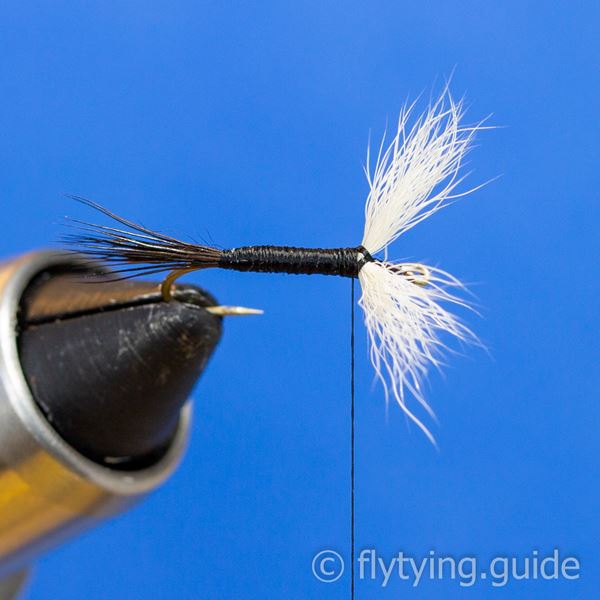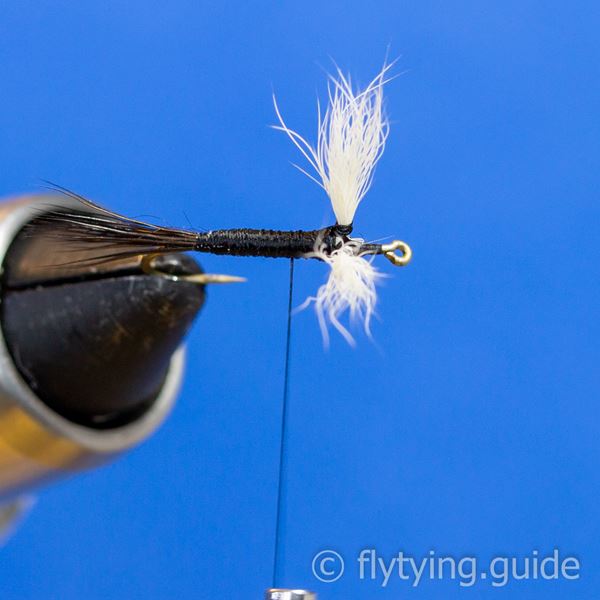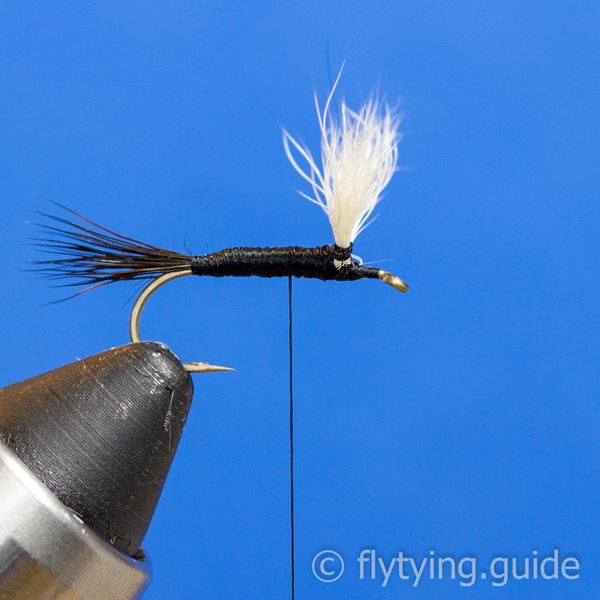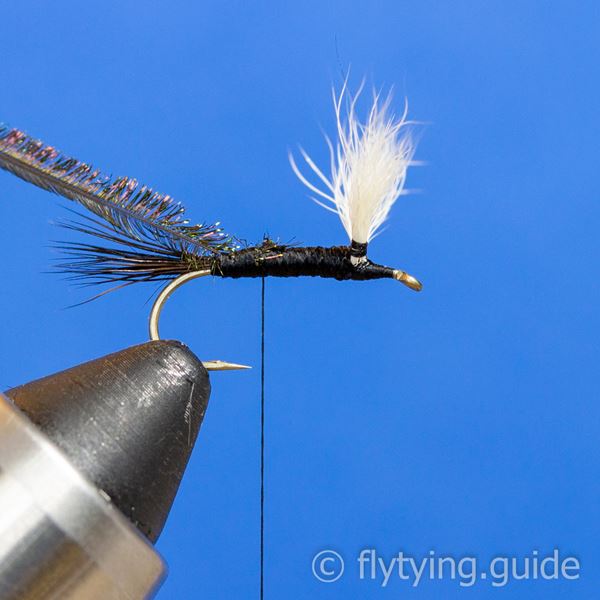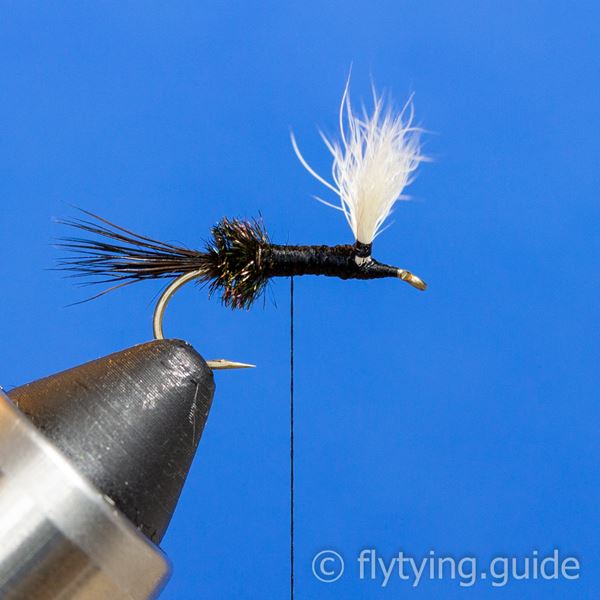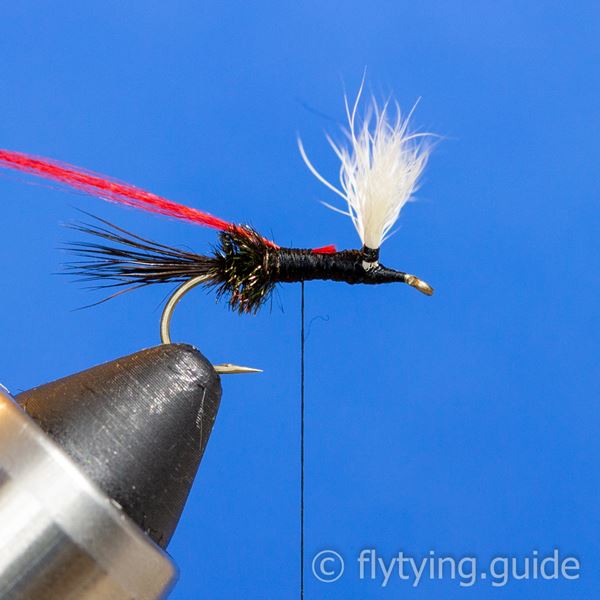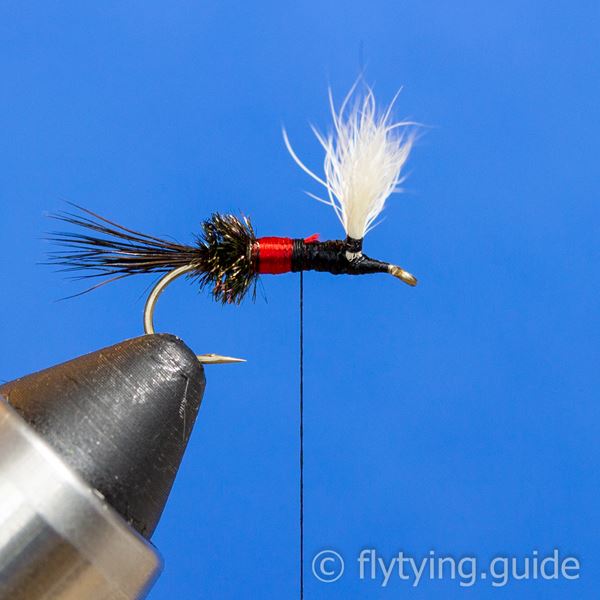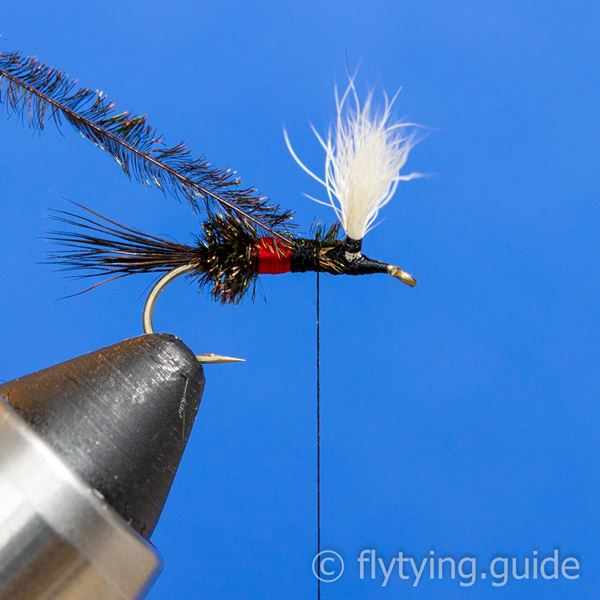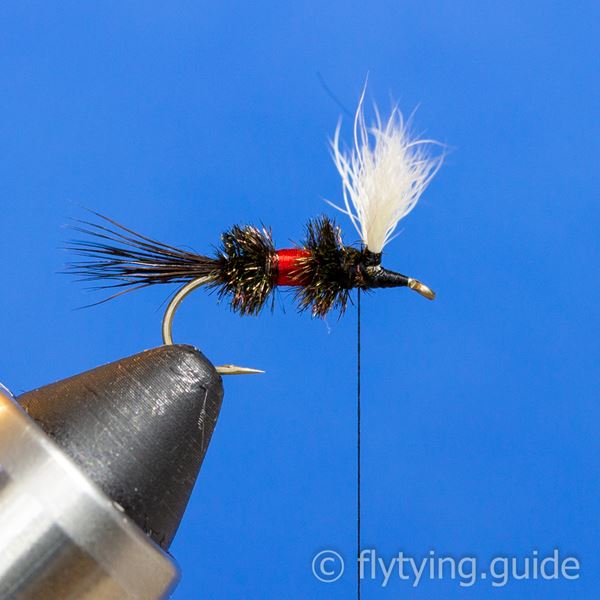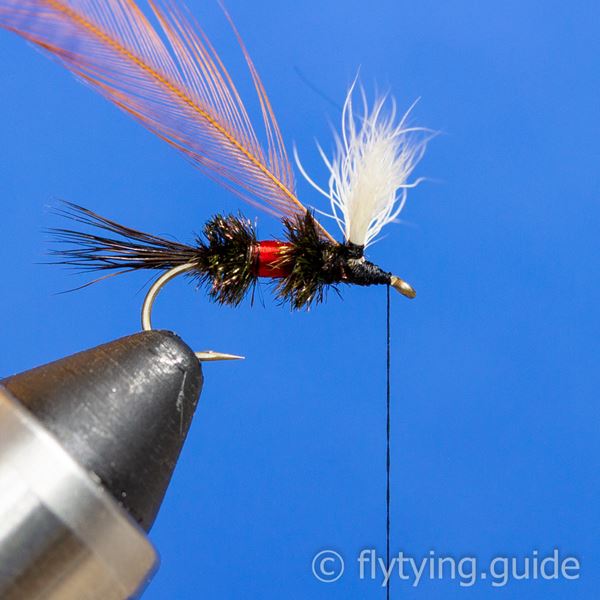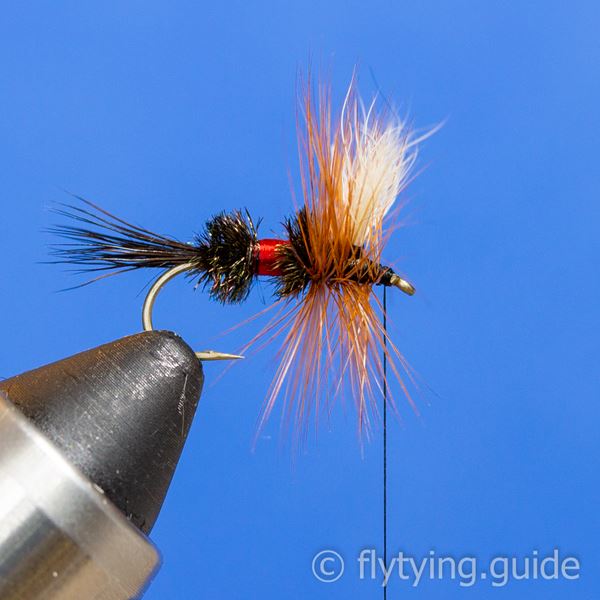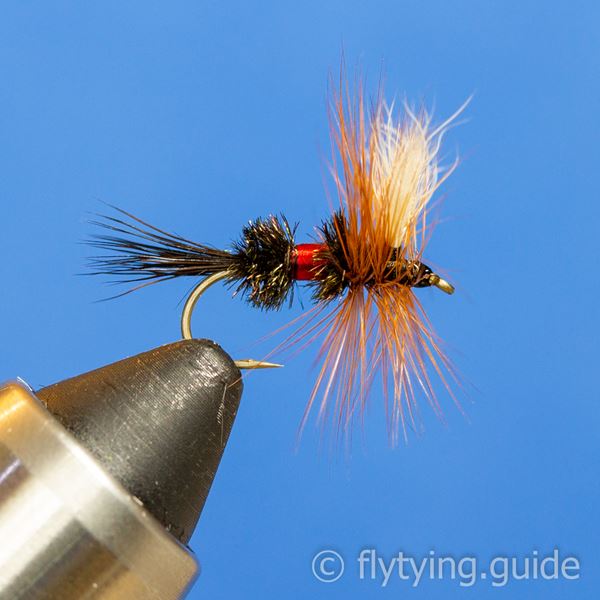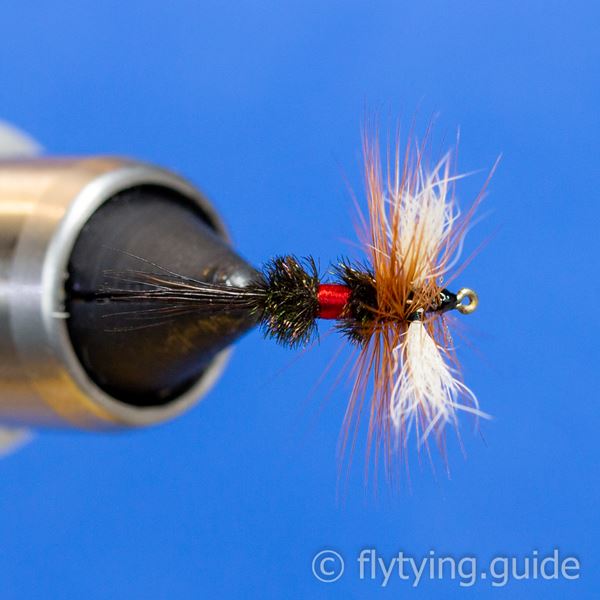Royal Wulff
Made famous by Lee Wulff, this variation of the royal coachman uses dark hair from a moose body as a tail in place of the golden pheasant tail, and calf hair for the wing in place of quill slips. The distinctive royal body made from peacock and red floss body are retained.
- Source: Lee Wulff
- Submitted By: Fly Tying Guide
Materials
4
Snip off a generous pinch of calf hair, about a hook gap in diameter. Remove the fluff, the size of the pinch will shrink considerably doing this, and place in a stacker to align the tips. Measure the wing so it is about a half a hook shank in length and tie in with a pinch wrap. Calf hair is very slippery so secure with several tight wraps to secure it to the top of the hook shank before you release it to trim the butts. Trim the butts at an angle.
